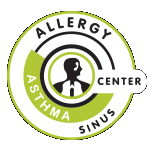Environmental Control Measures to Decrease Allergy Symptoms
Indoor Allergen Exposure
What can be done to decrease allergen exposure inside your home or office? Dr. Nicholas Kolinsky has some great tips and tricks to share!
Environmental control measures are a key part of any allergy action plan. Here are some helpful things you can do at home to decrease your exposure to allergens in your environment.
Dust Mites:
In order to decrease your exposure to dust and dust mites, we recommend you use specially designed dust mite covers for your pillows and mattress. You can find these at our offices or online via Amazon.com, Allergy Control Products or Mission: Allergy. Dust regularly with dusting products and wear a mask while cleaning. Sheets and pillowcases should be washed on the hot cycle (130 degrees or greater) and also dried in the dryer as opposed to hang drying. Try and keep pillows off the floor. Keeping the humidity level as low as possible with a dehumidifier is also helpful. The target is to have the humidity level below 50%, but levels below 50% may be difficult to reach during certain times of the year. If you have children, frequently wash stuffed animals or place them in a bag in the freezer for a couple of days to help kill off dust mites. Ideally, do not have carpet in the bedroom. HEPA air filters may be beneficial; however, they can be expensive and may not be very effective depending on the filter's size and location in the room. These measures will greatly reduce your exposure to dust and dust mites, but only allergy shots and appropriate medications can decrease or eliminate symptoms from dust mite allergy.
Mold:
Mold grows in areas of increased humidity, low light and cool temperatures. Areas where mold grows best are the basement, the area around the clothes dryer, and bathrooms. In addition, potted plants, mulch, leaves and other decaying matter have high levels of mold. If your carpet has ever been wet, you will have heavy mold growth under the carpet for the life of the carpet (which is why you should not steam clean your carpets). Placement of a dehumidifier can be helpful (ideal humidity level is below 40%-50%).
Pets:
Since pets are most often beloved members of the family, we do not recommend you get rid of them! Instead, you can take steps to help minimize your allergic responses. Rinsing your cat or dog will temporarily remove animal dander. It is best to do this at least once a week if possible. Keeping your pets out of your bedroom or AT LEAST off upholstered furniture is also a good idea. If possible, keep your pets in rooms without carpets. Dog and cat allergens can stay in a room for up to 6 months, even after the animal has been removed. There is also no such thing as a hypoallergenic dog/cat. Unfortunately, this is a common misconception. Allergy immunotherapy (allergy shots) will decrease and possibly eliminate your pet allergies.
Trees/Grass/Weeds:
Trees and grass pollinate in the spring and into summer. Ragweed pollinates from mid-summer until the first hard freeze of winter. Some of these pollens blow for up to 400 miles and are very difficult to avoid outdoors. Please keep your windows and doors shut at all times and filter your air through a high efficiency filter placed in your central health and air system. Change the filter monthly or according to the manufacturer's recommendations. Here, too, allergy immunotherapy can decrease or eliminate your pollen allergies.
You might also like
TRUST THE EXPERTS
All physicians board-certified in allergy and immunology

All Rights Reserved | The Allergy, Asthma & Sinus Center



